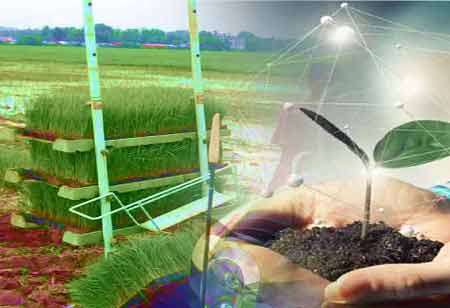Thank you for Subscribing to Agri Business Review Weekly Brief
The Rising Significance of Milking Robots in the Agricultural Sector
Milking robots transform agriculture by enhancing efficiency, productivity, and animal welfare,

By
Agri Business Review | Tuesday, June 11, 2024
Stay ahead of the industry with exclusive feature stories on the top companies, expert insights and the latest news delivered straight to your inbox. Subscribe today.
Milking robots transform agriculture by enhancing efficiency, productivity, and animal welfare, offering a sustainable solution amid technological, economic, and market-driven changes in dairy farming.
FREMONT, CA: The agricultural industry has witnessed a notable shift towards automation, with milking robots emerging as a focal point of this transformation. The adoption of milking robots represents a significant advancement in dairy farming practices, offering many benefits to farmers and cattle alike. The growing demand for milking robots in the agricultural sector explores the technological advancements driving this trend and the broader implications for the industry.
Conventionally, dairy farming relied heavily on manual labour for the milking process. However, technological advancements have transformed this aspect of agriculture, leading to the development of milking robots. These sophisticated machines are equipped with sensors, cameras, and robotic arms, allowing them to automate the milking process with precision and efficiency. Over the years, milking robots have undergone significant enhancements, incorporating automated teat cleaning, milk quality monitoring, and data analytics capabilities.
Benefits for Farmers
The adoption of milking robots offers numerous advantages for farmers, chief among them being increased efficiency and productivity. Unlike traditional milking methods that require round-the-clock labour, milking robots operate autonomously, allowing farmers to streamline their operations and allocate resources more effectively. Additionally, milking robots enable farmers to monitor individual cow health and milk production data in real-time, facilitating proactive management strategies and optimising herd performance. Moreover, by reducing the physical demands of manual milking, these robots help alleviate labour shortages and improve farm profitability.
Enhanced Animal Welfare
The significant benefit of milking robots is their improvement of animal welfare standards. Traditional milking practices often subject cows to stress and discomfort, leading to potential health issues and decreased milk production. In contrast, milking robots provide a more comfortable and stress-free environment for cattle, allowing them to voluntarily approach the machine for milking at their convenience. This voluntary milking process promotes healthier udders, reduces the risk of mastitis, and enhances overall cow well-being. As a result, milking robots are increasingly being recognised as a sustainable and humane alternative to conventional milking methods.
Technological Advancements
The growing demand for milking robots is partly attributed to continuous technological advancements in robotics and automation. Manufacturers continually refine their robot designs, incorporating innovations such as artificial intelligence, machine learning, and advanced sensing technologies. These advancements enable milking robots to adapt to diverse farm environments, optimise milking routines based on individual cow behaviour, and improve overall system performance and reliability. Furthermore, ongoing research and development efforts aim to enhance the capabilities of milking robots further, paving the way for even greater efficiency and functionality in the future.
Economic Considerations
While the initial investment in milking robots seems substantial, the long-term economic benefits far outweigh the costs for many farmers. Milking robots offer a significant return on investment through increased milk yields, labour savings, and operational efficiencies. Moreover, the scalability and flexibility of robotic milking systems allow farmers to expand their operations without significant additional overhead costs. Additionally, government incentives and financial assistance programs to promote agricultural innovation further incentivise farmers to adopt milking robots as a sustainable and economically viable solution.
The growing demand for milking robots represents a significant paradigm shift in the agricultural industry, driven by technological innovation, economic imperatives, and a renewed focus on animal welfare. As farmers seek to optimise their operations and adapt to evolving market dynamics, milking robots offer a compelling solution that delivers tangible benefits in terms of efficiency, productivity, and sustainability. While challenges remain, the momentum behind robotic milking systems continues to grow, shaping the future of dairy farming and paving the way for a more efficient, humane, and economically viable agricultural sector.





